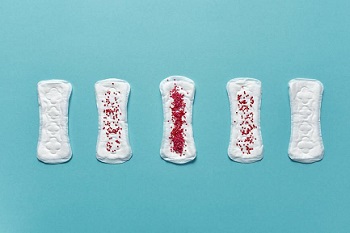Is Irregular Menstruation Related to Hydrosalpinx?
Hydrosalpinx is a type of chronic salpingitis, and its appearance is mainly related to salpingitis. After hydrosalpinx, the closer you are to the menstrual period, the more severe the pain will be until the menstrual cramps.

Is there any relationship between irregular menstruation and hydrosalpinx?
Problems with the fallopian tubes may affect the ovaries. When the inflammation of the fallopian tubes spreads to the ovaries, it will cause varying degrees of damage to the ovarian function, resulting in abnormal menstruation. Hydrosalpinx is a very harmful disease. It has no obvious clinical symptoms. If the hydrosalpinx is not treated in time, it will cause more fallopian tube diseases as the disease worsens.
Hydrosalpinx is usually caused by various diseases. This kind of gynecological disease is caused by no timely treatment. Therefore, when hydrosalpinx occurs, some women will feel their lower abdomen pain, backache and other symptoms. Normally, when a woman develops a gynecological disease, the first thing that is affected is menstruation. There will be symptoms such as too much or too little, dysmenorrhea, irregular menstruation and so on. In other words, irregular menstruation is related to hydrosalpinx.
In addition to irregular menstruation, what other clinical manifestations of hydrosalpinx?
1. Lower abdomen pain: A small number of patients will feel pain in the lower abdomen when the fallopian tubes are inflamed, and some patients with hydrosalpinx fimbria will have chronic abdominal pain. When the hydrosalpinx disease is delayed for a long time, some patients will have pain on one or both sides of the lower abdomen, falling, excessive discharge, low back pain and other symptoms.
3. Dysmenorrhea: Patients with hydrosalpinx may have dysmenorrhea. Long-term chronic inflammation of the fallopian tubes can cause pelvic congestion, which can cause congestive dysmenorrhea. Dysmenorrhea is often accompanied by abdominal pain starting 1 week before menstruation. , Until menstrual cramps.
4. Infertility: The typical symptom of hydrosalpinx is infertility. The female fallopian tube plays an important role in transporting sperm, ingesting eggs, and transporting fertilized eggs to the uterine cavity. When the fallopian tube is damaged by disease, it forms a blockage, hindering the passage of sperm and fertilized eggs, leading to infertility.
5. Abnormal vaginal discharge: Women suffering from hydrosalpinx will have a large amount of leucorrhea secreted every day. This is because when hydrosalpinx, the lumens of the dilated and undilated parts of the fallopian tube can still be connected, so patients often have intermittent vaginal discharge.
6. Others: Severe hydrosalpinx, in addition to symptoms such as infertility and dysmenorrhea, there may also be increased leucorrhea, gastrointestinal disorders, fatigue, affected labor or intolerance, neuropsychiatric symptoms, and mental depression.

Treatment of hydrosalpinx
Treatment methods for hydrosalpinx include medication, surgery, ultrasound, and physical therapy. The specific treatment should be decided according to the specific situation of the patient.
1. Medication: The doctor will decide the treatment plan based on the general condition of the patient. The pathogens of fallopian tube inflammation are mostly mixed infections. The TCM Fuyan pill can be used for effective sterilization. The patented Fuyan Pill is developed by Wuhan Li Xiaoping Clinic, and it can effectively treat hydrosalpinx. It is made of more than 50 kinds of Chinese herbal medicines, which are pure and natural without side effects and will not cause drug resistance. It can effectively regulate irregular menstruation caused by hydrosalpinx.
2. Surgical treatment: Surgical methods include laparoscopic salpingostomy, which is suitable for patients with mild hydrosalpinx. Tubal resection is suitable for patients with severe hydrosalpinx. Tubal embolization is used for patients with hydrosalpinx who cannot undergo intra-abdominal surgery.
3. Ultrasound therapy: It is mainly used for puncture and aspiration of hydrosalpinx under ultrasound guidance. It is suitable for patients who are unwilling to undergo surgical treatment. By removing the hydrops, the pressure in the lumen can be reduced to achieve the therapeutic effect.
4. Physical therapy: It is mainly through stimulation to promote local blood circulation, which is conducive to the absorption and resolution of inflammation. Commonly used physiotherapy methods include ultrashort wave, microwave, and ultraviolet radiation.
Recommended readings:
Will Blocked Fallopian Tubes Have an Effect on IVF?
previous pageWhat is the Pregnancy Rate After Blocked Fallopian Tubes Surgery?
next page
You may also be interested in
- Hydrosalpinx and IVF: What Are the Chances of Successful Embryo Implantation?
- What Are the Natural Herbal Remedies for Relieving Dysmenorrhea?
- Is Hysterosalpingography Harmful to the Body?
- Avoid These 4 Foods and 3 Activities During Menstruation
- Can Hydrosalpinx Be Thoroughly Drained by Aspiration Surgery?
Testimonials
- Adenomyosis with Ureaplasma Urealyticum Cured by Fuyan Pill
- Tubal blockage with hydrosalpinx can be cured by TCM shortly
- Fuyan Pill Helps A woman with Adenomyosis Get Pregnant
- A Woman with Hydrosalpinx Is Cured with Fuyan pill
- Pelvic Inflammatory Disease Testimonials
- Irregular Vaginal Bleeding and Endometrial Thickening Cured by Fuyan Pill
- Pruritus Vulvae and Frequent Urination: Mycoplasma Infection Cured after 2 Courses



